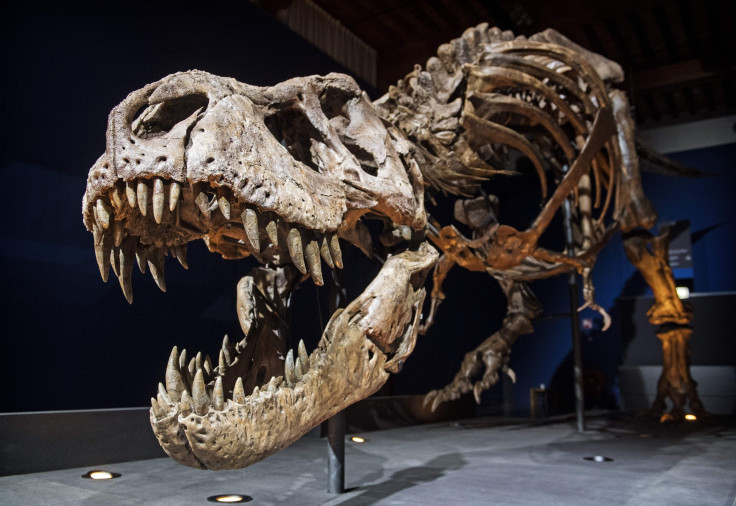Killer T. Rex Moved Surprisingly Slowly At Just 3 Mph, New Study Finds
KEY POINTS
- A study has found that the T. rex likely moved at a speed of just below 3 miles per hour
- Animals tend to adapt to a walking speed that requires minimal effort, according to the researchers
- Another study estimated that the top speed of a T. rex was between 12 and 18 miles per hour
A new study on the Tyrannosaurus rex has found that the predator wasn't really a fast mover and that humans could have easily kept up with its speed.
The T. rex would have covered just under 3 miles an hour. According to a team of Dutch paleontologists, this speed is similar to the walking speed of humans and other animals. They believe the dinosaur adapted this speed as it required minimal energy.
"Animals tend to prefer walking speeds at which, for a given distance, energy cost is minimal. They do this choosing specific step rhythms at which their body parts resonate," Pasha van Bijlert, lead author of the study, told CNN. He is also a graduate student in paleo-biomechanics at Vrije Universiteit Amsterdam.
"Since the entire tail of T. rex is suspended by ligaments, which behave like rubber bands, we reconstructed this tail to investigate at which step rhythm the tail of T. rex would resonate," van Bijlert continued.
Using a fossilized dinosaur named Trix, the researchers were able to calculate the T. rex's speed using a computer model of its tail. Trix is an adult T. rex about 12 meters long (39 feet). Trix's step rhythm was multiplied by the step length found in its fossil.
Surprisingly, the results showed that the predator only had a speed of approximately 2.86 miles per hour -- comparable to that of an ostrich, elephant, or giraffe.
"The entire tail, by our reconstruction at almost 1,000 kilos, was really just a mass supported by a rubber band and with every step, it would slightly bounce up and down. With the right rhythm you get a lot of movement for very little effort," van Bijlert explained.
The lead author noted that previous calculations of the T. rex's speed were only based on its legs and hips, leaving much room for error since they didn't take the dinosaur's tail into account.
Although the team did not estimate the giant predator's maximum speed in the study, future research will hopefully provide paleontologists with more answers. It is worth noting that another study estimated that the top speed of a T. rex could have reached about 12-18 miles per hour.
"This study covers some new ground in a clever way with an original model. It's interesting and would be useful to integrate with and compare with other approaches in the future," van Biljert concluded.
The study conducted by van Biljert and his team was published in the journal Royal Society Open Science on Tuesday.

© Copyright IBTimes 2025. All rights reserved.





















